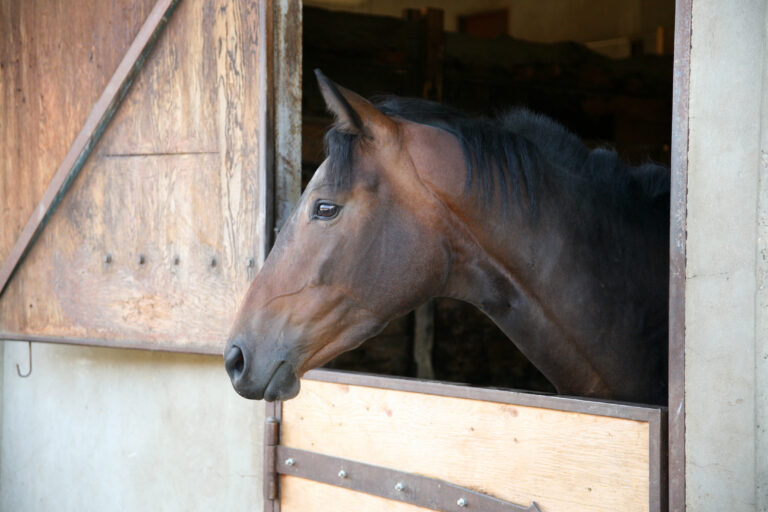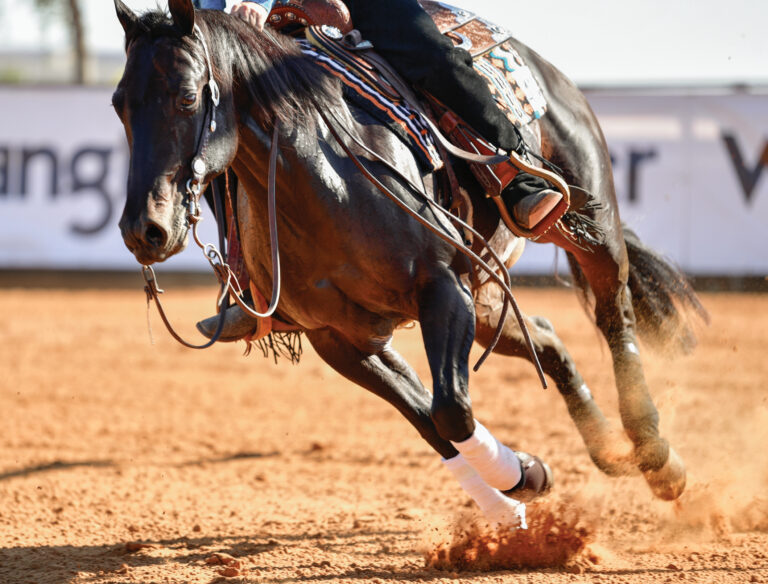So, you ride a senior horse? Great! Older horses come with the experience and temperament to make great riding or competition horses. That said, because of their age and accumulated stress on their body, they often require additional care, especially when it comes to joint health and leg injury prevention than a young prospect.
Senior horses’ legs are especially vulnerable because they bear the most weight and strain of any work. The legs also have the most exposed joints and soft tissue structures.
Common Leg Injuries in Senior Horses
As a result of cumulative damage, your senior horse may be more likely to develop a range of leg injuries from manageable inflammation to injury.
The most common leg injuries for senior horses include:
• Injury to the inferior check ligament of the deep digital flexor tendon
• Desmitis, or ligament inflammation
• Digital flexor tendon sheath injuries
• Suspensory ligament desmopathy
• Superficial digital flexor tendonitis
• Injuries because of skin wounds, such as dermatitis
• Osteoarthritis
LEARN MORE ABOUT JOINT HEALTH AND WHEN TO CONSIDER JOINT INJECTIONS

Daily Leg Care and Injury Prevention for Senior Horses
While some injuries, particularly those that are degenerative, are unavoidable, many leg injuries can be avoided through proper daily maintenance and management. This starts from how you prepare for exercise to how you help your horse recover.
Warm up and cool down: With any horse—and not only seniors—it’s best to warm up before jumping into intense exercise or maneuvers. With older horses, warm-ups are necessity to avoid injuries. Even if you can’t get your full ride in, prioritize a warm-up and cool-down to ensure that your horse’s muscles and supporting structures are primed to work and that they loosen up after exercise.
Leg up: Again, building up to more intense exercise is important for any horse, but seniors may need more time to get in shape. It’s not simply the cardiovascular conditioning or strength that needs to be considered, but the joints and soft tissue as well. Older horses are more prone to inflammation and tendon and ligament injuries so benefit from more leg-up time before competitive or strenuous exercise.
Hoof care: While the hoof is not necessarily a part of the leg, they are your horse’s base. Poorly or infrequently trimmed or shod hooves can cause negative upstream effects for active seniors and retired horses. Keep your senior horse on a consistent schedule with your farrier, and work with someone who understands the needs of your senior horse that may lack the mobility of younger horses.

Supplements Glucosamine, chondroitin sulfate, hyaluronic acid, and MSM can benefit senior horses that need additional joint support. In fact, many of these supplements are recommended for horses in the early stages of osteoarthritis to manage pain and progression.
Pay attention: If you see something, say something or at least watch for trends. Horses won’t lie to you, with their body or their personality. If something’s off, from how they walk to the size of their legs and attitude, be on the lookout for more signs. If any issue persists, consult your vet.
As with any horse, the more diligently you care for them, the stronger and more resilient their body will be. While your senior horse may be more prone to certain leg injuries or degenerative diseases, they are still great riding horses long-term.
LEARN HOW TO READ YOUR HORSE’S FEET
Advanced Therapies for Senior Horse Recovery and Maintenance
Because of their horse’s age, likelihood for recovery, and potentially, economics, senior horse owners may skimp on preventative care tools. However, aside from high-level performance horses, older horses are the other group that can benefit most from the extra bells and whistles.
Hydrotherapy: Uses water to lessen a horse’s body weight for exercise. Most often used as a form of physical therapy after an injury, swimming, water treadmills, and cold-water therapy can keep your senior active without placing strain on the joints.
Electromagnetic therapy: Static (non-pulsing) and pulsed electromagnetic field (PEMF) therapy applies electromagnetic fields to a part of the horse’s body and is thought to improve bone healing rates, regenerate and protect cartilage cells, and reduce pain and inflammation.
Heat and cold: Both heat and cold can be a non-invasive way to reduce inflammation and reduce pain for your senior horse. Standing cold wraps or cold hosing with water can be useful after rides. While heat can be helpful for recovery, it’s mostly used to increase circulation after an injury, typically during the healing phase, not after immediate injury. Improved circulation means more blood to the area for repair.
Compression: Sleeves and wraps that compress your horse’s legs can improve drainage to reduce the risk of stocking up, especially important for stalled horses. It can also manage pain and swelling after exercise.


![[Aggregator] Downloaded image for imported item #35942](https://s3.amazonaws.com/wp-s3-horseandrider.com/wp-content/uploads/2025/10/20105738/EDCC-Unbranded-14-300x200-1.jpeg)

